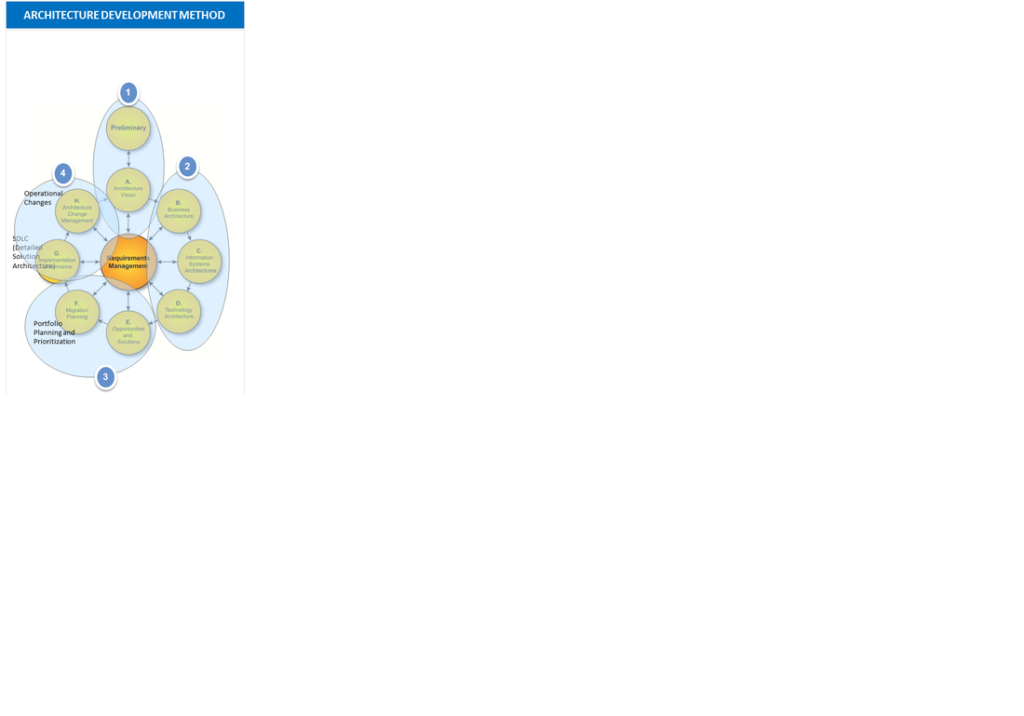
March 3, 2013
My experience in implementing TOGAF in a variety of firms, has led me to conclude that to be successful in “developing” an EA capability within an organization requires organizing TOGAF’s 10 Architecture Development Methodology (ADM) Phases into Super-Phases or “Stages” since each requires a unique set of skills, experience and firm-specific knowledge.
Stage 1: “ENTERPRISE ARCHITECTURE PLANNING”
The Preliminary and Architecture Vision phases could be considered “Enterprise Architecture Planning” for an iteration of the ADM cycle. These phases address deliverables such as EA objectives, scope of the enterprise, EA terminology, EA-oriented decision rights, integration with other management frameworks (e.g., corporate strategy, SDLC, etc…) and other related artifacts.
Key skills: project scoping, firm culture, firm structure (e.g., centralized vs. decentralized), other management frameworks
Stage 2: “ENTERPRISE ARCHITECTING”
The Business, Information Systems (Application and Data) and Technology Architecture phases are the “enterprise” viewpoints. Current and Future State architectures as well as the associated gaps and risks are defined in these phases for each domain. Potential Roadmap components for each domain are defined in these phases.
Perhaps most importantly, cross-domain (i.e., heat map) analysis is performance in this phases. For example, which business processes are enabled by which applications.
Key skills: business strategy, business process analysis, industry-specific (e.g., insurance) application technologies (e.g., underwriting software applications), application integration techniques, data-oriented technologies (e.g., MDM) data analytics, firm-specific data, infrastructure technologies (e.g., SANs).
Stage 3: “ROAD MAPPING”
The “Opportunities and Solutions” phase consolidates and reconciles the gap analyses done per each domain. Ultimately, it highlights the work packages (e.g., program/projects) that are required to transition from current to future state. A high-level roadmap (a Gantt chart) is defined in this phase.
The “Migration Planning” phase details the business value, prioritization and sequencing of the work packages. A detailed roadmap is defined in this phase. The precise handoffs to project management and operations are determined here.
Key Skills: project scoping, project estimation, project dependencies, project prioritization, firm-specific perations
Stage 4: “SOLUTION ARCHITECTURE GOVERNING”
In Phase G, the EA team seeks to ensure conformance with the Target Architecture by implementation (solution, systems) projects. The project teams are architecting the solutions (systems) in this phase.
In Phase H, minor changes are addressed by the EA team. At some point, major changes may warrant starting a new ADM cycle.
Key Skills: project oversight, project rescue, project status, governance (decision-rights)
